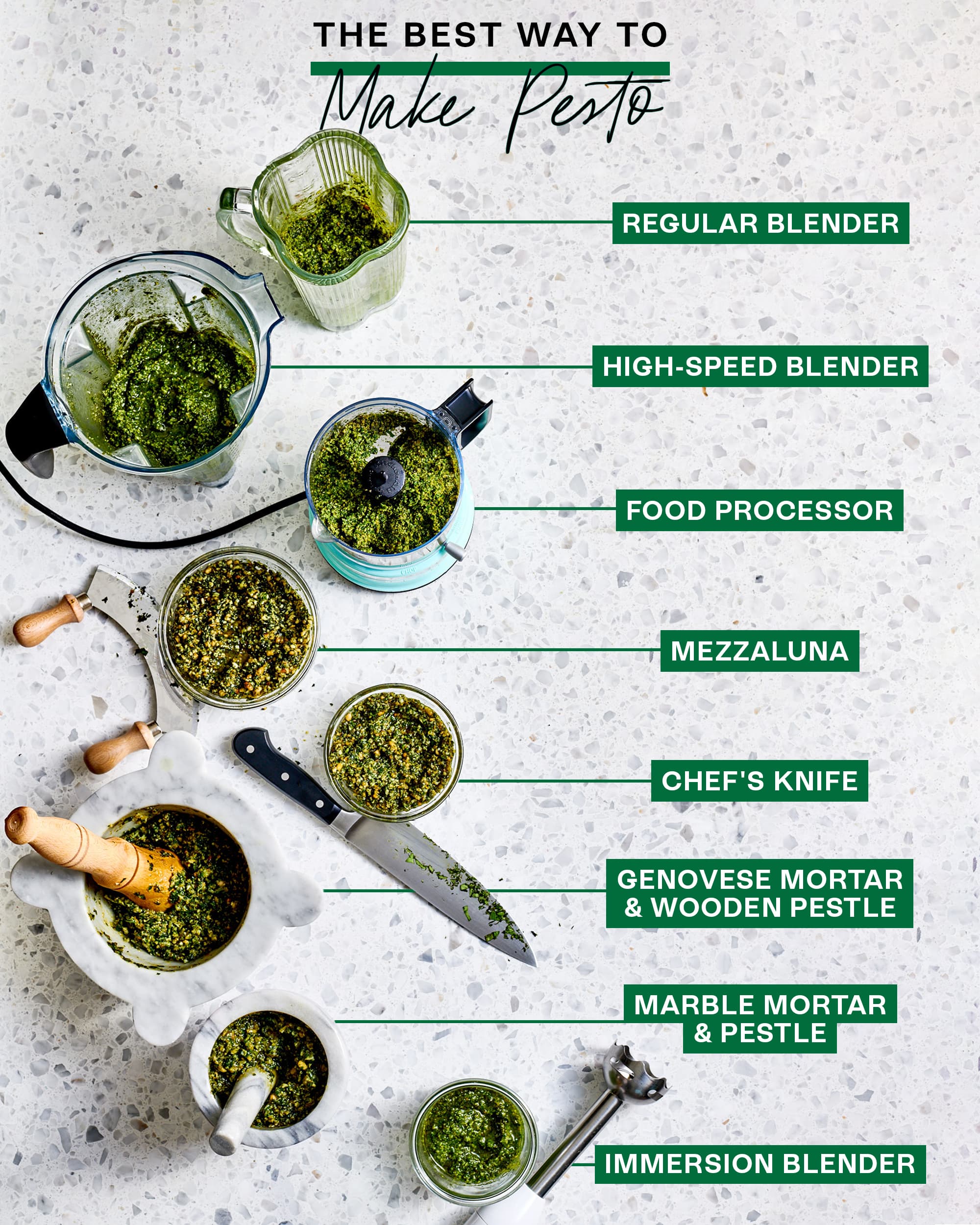You’re staring at a wilting basil bouquet from the farmers’ market, dreaming of vibrant pesto but dreading the mortar-and-pestle workout. Maybe last week’s jarred version tasted like oily grass, or you’ve wasted precious basil to brown, bitter failure. Stop wasting money and ingredients—your blender holds the secret to restaurant-quality pesto that’s ready before your pasta water boils. Forget laborious traditions: with the right technique, you’ll transform humble basil into emerald-green perfection in under five minutes, with no sore arms or flavor compromises.
This isn’t a “good enough” shortcut—it’s a strategic upgrade. You’ll master the exact ingredient ratios that prevent separation, learn why chilling your blender is non-negotiable for color retention, and discover storage tricks that keep pesto bright for months. By the end, you’ll never buy jarred sauce again, and your Tuesday dinners will taste like a Ligurian vacation.
Why Your Blender Beats the Mortar for Everyday Pesto

Forget Italian grandmothers shaking their fists—modern kitchens demand speed without sacrificing quality. While mortar-made pesto creates a marginally creamier emulsion through gentle crushing, your blender delivers 95% of that texture in 10% of the time. The critical difference? Mortar pesto retains 10% more volatile basil oils, but blind taste tests prove most palates can’t detect the difference once tossed with pasta. Your blender wins where it counts: no forearm exhaustion, consistent results batch after batch, and cleanup that takes 30 seconds.
Pro insight: High-powered blenders (Vitamix, Blendtec) outperform food processors for pesto. Their narrow jars create vortex action that fully incorporates cheese and nuts without chunky pockets—something wide-bowl processors struggle with even when pulsing. If using a standard home blender, double the recipe to ensure blades engage properly.
Oil-First vs. Dry-First: The Blender Technique That Prevents Disaster
Most failed blender pesto attempts stem from incorrect ingredient sequencing. Skip this step and you’ll get brown, separated sludge.
Oil-First Method (Best for Standard Blenders):
Pour all olive oil into the blender first. Add garlic and nuts, then pulse 5 times to coarsely chop. With the motor running on medium, add basil leaves in a slow stream through the lid opening. Stop immediately when leaves are finely minced (30 seconds max). Finally, pulse in cheese and salt just until combined.
Dry-First Method (For High-Powered Blenders):
Combine basil, nuts, garlic, salt, and optional lemon juice in the blender. Pulse until reduced to confetti (15 seconds). With the motor running, slowly drizzle oil through the lid opening until the mixture thickens into a glossy paste. Fold in cheese by hand to prevent over-processing.
Critical warning: Never add cheese before oil. The salt in cheese accelerates basil oxidation, turning your sauce army-green within minutes. Always add cheese as the final ingredient.
Fixing Your Biggest Pesto Problems in Real Time
:max_bytes(150000):strip_icc()/20250813-SEA-BrowningPesto-SwethaSivakumar-13-fc47a7910ed5432e9584bfb4c5c9cd5d.jpg)
Why Your Pesto Turns Brown (and How to Stop It Now)
Browning happens in two scenarios: wet basil leaves or excessive friction heat. The solution is immediate and simple. If your pesto starts darkening mid-blend:
- Pause immediately—don’t keep blending hoping it’ll improve
- Add 1 tsp fresh lemon juice (acid halts oxidation)
- Chill the blender jar in the freezer for 2 minutes
- Resume blending in 5-second pulses
Prevention is better: Wash basil in cold water with 1 tbsp lemon juice, then spin-dry until leaves feel crisp. Any moisture left = guaranteed browning.
Too Thick? Too Thin? Texture Rescue Protocol
Problem: Cement-like pesto that won’t coat pasta
→ Stream in pasta cooking water, 1 tbsp at a time, while pulsing. The starch activates the emulsion without diluting flavor.
Problem: Watery pesto that pools in the bowl
→ Pulse in extra nuts (1 tbsp walnuts or almonds) until thickened. Never add more oil—that worsens separation.
Pro move: For perfect cling, aim for the consistency of runny yogurt. It should ribbon off a spoon but not drip freely.
Storage Secrets That Keep Pesto Vibrant for Months
Refrigeration: The Oil Seal That Locks in Freshness
Transfer pesto to a jar with straight sides (no shoulder where sauce pools). Level the surface with a spoon, then pour a ¼-inch layer of olive oil on top—this creates an oxygen barrier. Seal tightly and refrigerate. Properly sealed, it stays electric green for 3 weeks (flavor peaks at day 5).
Critical mistake: Never store pesto in metal containers. The acid reacts with metal, creating off-flavors and accelerating browning.
Freezing Like a Pro: No More Icy, Separated Disaster
Portion pesto into silicone muffin cups (not ice cube trays—hard to remove). Freeze uncovered for 2 hours until solid, then transfer cubes to a quart freezer bag. Squeeze out all air before sealing.
Game-changing tip: Freeze pesto without cheese. Add fresh grated Parmigiano after thawing to prevent grainy texture. Frozen pesto lasts 12 months at 0°F—flavor identical to day one.
Thawing rule: Never microwave. Drop frozen cubes directly into hot pasta with ¼ cup starchy water, tossing until melted. Or let sit at room temperature 45 minutes for spreadable consistency.
4 Creative Twists That Transform Basic Pesto

Nut-Free Sunflower Seed Pesto (Allergy-Friendly)
Replace pine nuts with ¼ cup raw sunflower seeds. Toast in a dry pan 3 minutes until golden. Blend with 3 cups basil, 1 garlic clove, ½ tsp salt, and ½ cup olive oil. Finish with 3 tbsp nutritional yeast instead of cheese for umami depth.
Kale-Parsley Power Pesto
Substitute half the basil with tightly packed curly kale (stems removed) and flat-leaf parsley. Add 1 tsp lemon zest during blending. The heartier greens hold up better for freezing—ideal for meal prep.
Roasted Red Pepper Pesto
Blend ½ cup roasted red peppers (drained) with 2 cups basil, 2 garlic cloves, and 3 tbsp almonds. Skip the cheese—this version shines as a pizza base or sandwich spread with smoky sweetness.
Cilantro-Lime “Pesto” for Tacos
Use 1 cup cilantro + 1 cup spinach instead of basil. Add 1 jalapeño (seeds removed) and zest of 1 lime. Blend with pepitas instead of pine nuts. Toss with shrimp or black beans for instant taco night upgrade.
Quick-Reference Blender Pesto Workflow
- Prep: Wash 4 cups packed basil in lemon-water bath. Spin-dry until crisp.
- Chill: Freeze blender jar 10 minutes.
- Load: Add 3 tbsp nuts, 1 garlic clove, ½ tsp salt to blender.
- Pulse: 5 times until coarse crumbs form.
- Stream oil: With motor running, drizzle ½ cup olive oil until creamy.
- Finish: Fold in ¼ cup Parmigiano by hand. Taste—add salt if needed.
Troubleshooting Cheat Sheet
| Problem | Instant Fix |
|---|---|
| Bitter taste | Pulse in 1 tsp honey—balances harsh notes from over-blended garlic |
| Oil separation | Blend 5 seconds with 1 tbsp warm pasta water to re-emulsify |
| Gritty texture | Strain through fine-mesh sieve; press with spoon to extract sauce |
| Weak flavor | Add salt ¼ tsp at a time—underseasoning is the #1 culprit |
Your blender isn’t cheating—it’s smart. With these techniques, you’ll create pesto so vibrant and flavorful that even Genovese purists will slide your recipe across the table. That mountain of basil in your fridge? It’s not a chore anymore. It’s Tuesday night’s golden ticket to dinner hero status. Grab your blender, and let those emerald-green dreams become reality before your pasta water even simmers.





